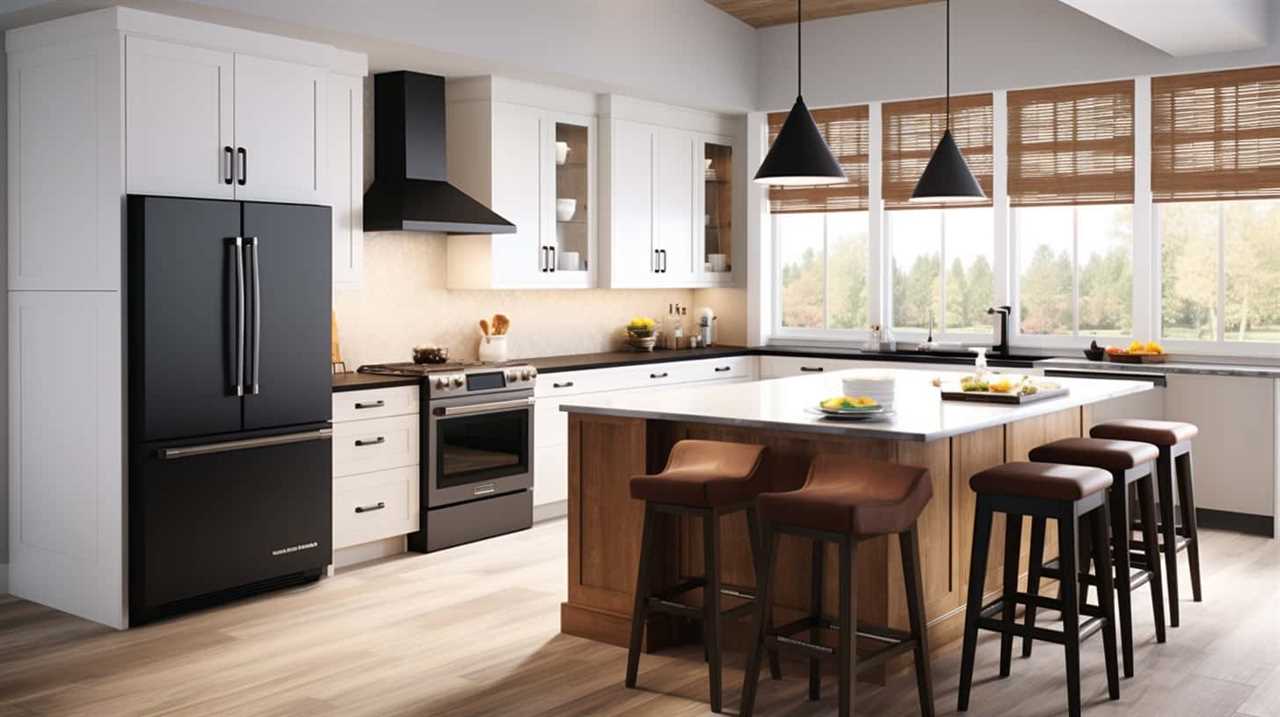In today’s modern world, energy conservation has become a crucial part of living responsibly. One effective way to reduce energy consumption that is often overlooked is unplugging appliances when they are not being used. This practice, called unplugging, can greatly help save energy and promote a more sustainable way of living.
By understanding the concept of phantom power and the energy drain caused by appliances in standby mode, individuals can make informed decisions about their energy usage. Furthermore, unplugging appliances not only reduces environmental impact but also protects the lifespan of these devices.
This introduction will delve into the reasons why unplugging appliances saves energy and provide valuable tips and tricks for incorporating this practice into daily routines.
Key Takeaways
- Unplugging appliances reduces standby power consumption and prevents vampire energy consumption.
- Unplugging appliances contributes to energy conservation and helps minimize greenhouse gas emissions.
- Unplugging appliances increases energy efficiency and can lead to lower energy bills.
- Unplugging appliances extends their lifespan by preventing wear and tear caused by constant standby power.
Understanding Phantom Power
Understanding Phantom Power is essential for conserving energy and reducing electricity costs.

Phantom power, also known as standby power or vampire power, refers to the energy consumed by electronic devices even when they are not in use but remain plugged in. This phenomenon occurs because many devices, such as televisions, computers, and chargers, continue to draw a small amount of power to maintain features like clocks, remote control functions, or to be ready for immediate use.
The Energy Drain of Appliances
The energy drain of appliances refers to the wastage of electricity that occurs when appliances are in standby mode or not in use. This phenomenon is commonly known as standby power wastage or vampire energy consumption.
Standby power refers to the small amount of electricity that appliances continue to draw even when they are turned off, but still plugged into an outlet. Understanding and addressing this energy drain is crucial for optimizing energy efficiency and reducing unnecessary electricity consumption.
Standby Power Wastage
Standby power wastage, also known as the energy drain of appliances, is a significant contributor to unnecessary energy consumption. When appliances are not in use but remain plugged in, they continue to draw power from the electrical grid. This standby power can account for a substantial portion of a household’s energy usage.

To address this issue, energy saving strategies focus on standby power reduction. One effective approach is to unplug appliances when they are not in use. Additionally, using power strips with an on/off switch allows multiple devices to be powered off simultaneously, minimizing standby power wastage. By implementing these measures, households can significantly reduce their energy consumption and lower their electricity bills.
However, standby power wastage is just one aspect of the larger issue of vampire energy consumption, which will be discussed in the following section.
Vampire Energy Consumption
To further delve into the issue of unnecessary energy consumption, it is crucial to address the concept of vampire energy consumption, which refers to the continuous drain of power by appliances even when they are not actively being used. This phenomenon occurs due to appliances being left in standby mode or being connected to power sources that draw energy even when switched off.
Vampire energy consumption is a significant contributor to electricity wastage and can be a major concern for energy saving strategies. By reducing electricity usage caused by vampire energy consumption, individuals can make a substantial impact on their energy bills and the environment.

To combat this issue, here are three key strategies to consider:
- Utilize power strips with an on/off switch to easily disconnect multiple appliances from the power source.
- Unplug appliances that are not frequently used or needed, such as phone chargers or kitchen appliances.
- Consider investing in smart power strips that automatically cut off power to devices when they are not in use.
Implementing these strategies can help reduce vampire energy consumption and promote energy efficiency in households and businesses.
Unplugging for Energy Efficiency
Unplugging appliances for energy efficiency involves three key concepts:
- Reducing standby power consumption: Standby power consumption refers to the electricity consumed by appliances when they are not in use but still plugged in. This can account for a significant portion of overall energy usage. By unplugging appliances when they are not in use, individuals can reduce standby power consumption and save energy.
- Minimizing phantom energy usage: Phantom energy usage occurs when devices continue to draw power even when turned off. This can happen with devices like televisions, chargers, and computers. By identifying these devices and unplugging them when not in use, individuals can minimize phantom energy usage and further conserve energy.
- Increasing energy-saving awareness: Encouraging individuals to actively unplug appliances when not in use is an effective way to increase energy-saving awareness. By creating a habit of unplugging appliances, individuals can contribute to energy conservation efforts and reduce their electricity bills.
Reducing Standby Power Consumption
Reducing standby power consumption through the disconnection of appliances is a key method for improving energy efficiency. By unplugging appliances when they are not in use, you can minimize electricity waste and reduce energy bills. Standby power, also known as vampire power or phantom load, refers to the energy consumed by electronic devices even when they are turned off or in standby mode.

Here are three reasons why reducing standby power consumption is important:
- Standby power can account for a significant portion of household energy consumption, resulting in unnecessary energy waste and higher electricity bills.
- Unplugging appliances eliminates the vampire power draw, ensuring that no energy is wasted when devices are not actively being used.
- By reducing standby power consumption, you contribute to a more sustainable and environmentally friendly lifestyle, helping to conserve valuable energy resources.
Taking simple steps to unplug appliances when not in use can have a significant impact on energy efficiency and help you save money on your energy bills.
Minimizing Phantom Energy Usage
By actively disconnecting appliances when they are not in use, you can effectively minimize phantom energy usage and improve overall energy efficiency.
Phantom energy, also known as standby power or vampire power, refers to the electricity consumed by appliances and devices that are plugged in but not actively being used. This energy consumption occurs because these appliances are designed to be in a standby mode, ready to be activated at any time. However, this standby mode still requires a small amount of electricity to power functions such as clocks, indicators, and remote control receivers.
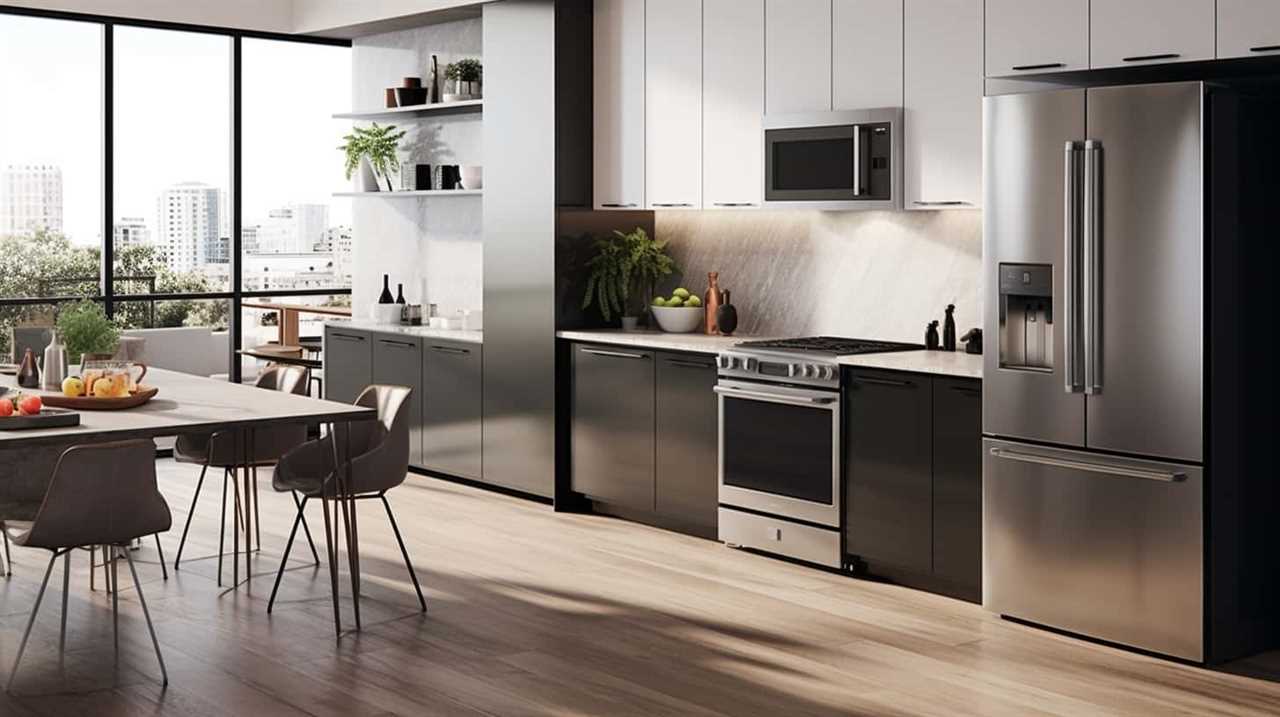
To reduce standby power and minimize phantom energy usage, it is crucial to unplug appliances when they are not in use. This simple action can significantly contribute to energy saving strategies and help conserve resources.
Now, let’s explore how increasing energy-saving awareness can further enhance our efforts to reduce energy consumption.
Increasing Energy-Saving Awareness
To promote energy efficiency, it is essential to raise awareness about the benefits of unplugging appliances when they are not in use. By increasing energy-saving habits and promoting sustainable practices, individuals can make a significant impact on reducing energy consumption and minimizing their carbon footprint.
Here are three key reasons why increasing energy-saving awareness and unplugging appliances for energy efficiency is crucial:

- Reduced energy consumption: Unplugging appliances eliminates standby power consumption, also known as phantom energy usage, which accounts for a significant portion of household energy consumption.
- Cost savings: By unplugging appliances, individuals can save on their energy bills as they are not paying for the electricity consumed by appliances that are not in use.
- Environmental impact: Unplugging appliances reduces the demand for electricity, leading to a decreased reliance on fossil fuel power plants and a reduction in greenhouse gas emissions.
The Environmental Impact of Standby Power
The environmental impact of standby power can be significant, particularly when considering the wastage of energy caused by appliances being left on standby mode. Standby power, also known as vampire power or phantom load, refers to the electricity consumed by electronic devices when they are not in active use but are still plugged in.
This seemingly small amount of power can accumulate to a significant level when multiplied by the number of appliances in households and businesses worldwide. Energy efficient appliances play a crucial role in reducing standby power consumption, as they are designed to minimize the energy used during standby mode.
Unplugging as a Green Practice
Unplugging appliances can be seen as a green practice due to its potential for energy conservation.
By disconnecting appliances from the power source when they are not in use, individuals can actively reduce the standby power consumption that occurs when appliances are left plugged in.

This simple act can lead to significant energy savings over time and contribute to a more sustainable and environmentally friendly lifestyle.
Energy Conservation Through Unplugging
Energy conservation can be achieved by disconnecting appliances from power sources. Unplugging appliances is a simple yet effective way to adopt energy-saving habits and contribute to the overall benefits of energy conservation. Here are three key reasons why unplugging is a green practice:
- Standby power consumption: Many appliances continue to draw power even when they are turned off or in standby mode. Unplugging these devices eliminates this ‘phantom’ or ‘vampire’ energy usage, reducing unnecessary electricity consumption.
- Energy efficiency: Some appliances, such as older models or those without energy-saving features, consume more power when left plugged in. Unplugging these devices ensures that energy is only used when necessary, promoting energy efficiency.
- Environmental impact: By unplugging appliances, we reduce the demand for electricity, which in turn decreases the reliance on fossil fuels for power generation. This helps minimize greenhouse gas emissions and mitigate climate change.
Benefits of Unplugging
By adopting the practice of unplugging, individuals can actively contribute to a more sustainable future and reap the benefits of energy conservation. Unplugging appliances when they are not in use is a simple yet effective way to reduce electricity usage and increase energy efficiency. This green practice not only helps to lower energy bills but also has a positive impact on the environment.
To better understand the benefits of unplugging, let’s consider the following table:
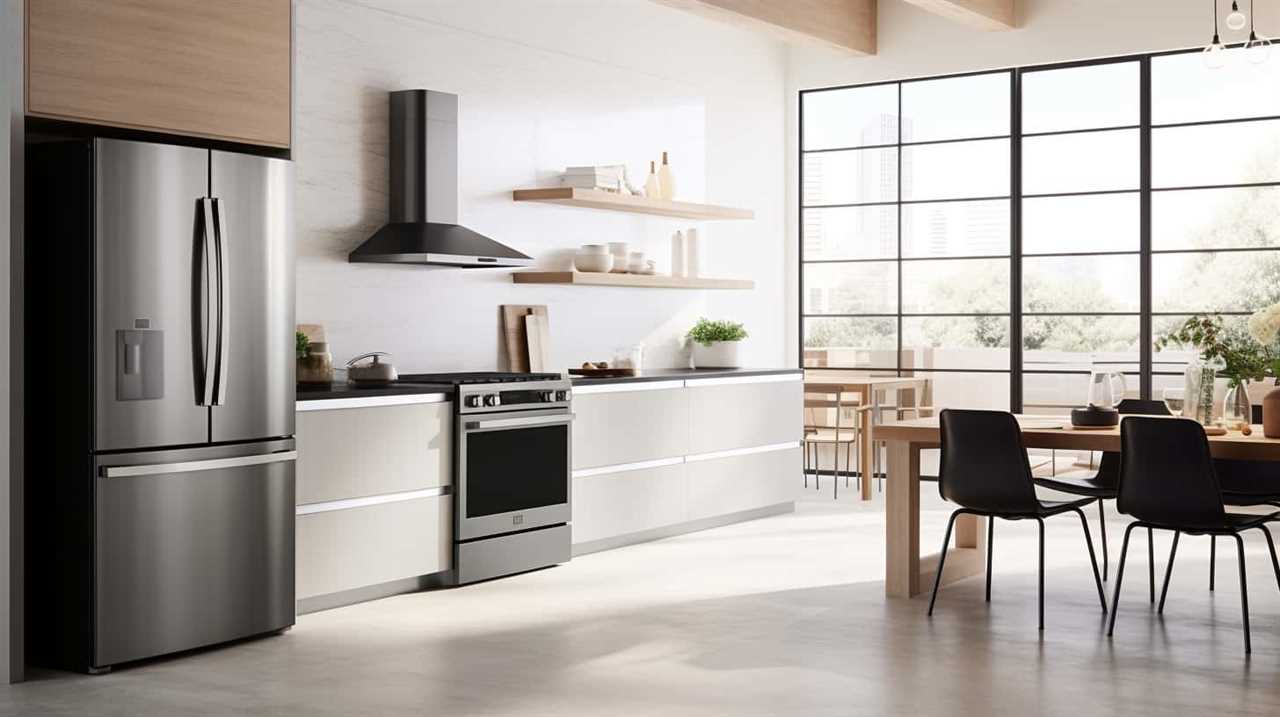
| Benefits of Unplugging | Explanation |
|---|---|
| Reduced energy consumption | Unplugging appliances eliminates standby power consumption, also known as vampire power, which can account for up to 10% of household energy usage. |
| Extended lifespan of appliances | By unplugging appliances, they are spared from the wear and tear caused by constant standby power, leading to a longer lifespan. |
| Reduced carbon footprint | Unplugging appliances reduces the demand for electricity, which in turn reduces the need for fossil fuel-based power generation, resulting in lower greenhouse gas emissions. |
Energy Savings Through Unplugging
When appliances are unplugged, they can significantly reduce energy consumption. Understanding energy vampires and the impact of unplugging on electricity bills is crucial for achieving energy savings.
Here are three key reasons why unplugging appliances can lead to substantial energy savings:
- Standby Power: Many devices consume energy even when they are turned off or in standby mode. These energy vampires can account for a significant portion of electricity bills. Unplugging these appliances eliminates their standby power consumption.
- Phantom Load: Certain devices, such as chargers and power adapters, continue to draw power even when not in use. By unplugging these devices when not in use, you can prevent unnecessary energy loss and reduce electricity bills.
- Safety: Unplugging appliances when not in use not only saves energy but also reduces the risk of electrical fires and accidents caused by faulty devices or power surges.
Breaking Down the Numbers: How Much Energy Is Saved
To further analyze the impact of unplugging appliances on energy consumption, it is important to quantify the amount of energy that can be saved. Calculating electricity usage requires understanding the power rating of the appliance and the duration it is left plugged in.
For example, a common household appliance like a television may consume around 50 watts of power when in standby mode. If left plugged in for 24 hours a day, it would consume 1.2 kilowatt-hours (kWh) of electricity per day. Over the course of a month, this amounts to approximately 36 kWh, which can have a significant impact on monthly bills.

By unplugging appliances when not in use, households can potentially save a substantial amount of energy and reduce their electricity costs.
This brings us to the next question: unplugging vs. power strips, which is better?
Unplugging Vs. Power Strips: Which Is Better
When considering the comparison between unplugging appliances and using power strips, several factors come into play.
One key point to consider is the energy consumption comparison between the two options.

Additionally, the convenience and accessibility of power strips may be a deciding factor for some individuals.
Lastly, a cost-effectiveness analysis can help determine which option is more practical in terms of long-term savings.
Energy Consumption Comparison
The comparison of energy consumption between unplugging appliances and using power strips is a topic of interest among professionals. When considering the energy saving benefits and energy efficiency comparison between the two options, it is important to take into account the following factors:
- Standby Power: Appliances that are plugged in but not in use still consume energy, known as standby power. Unplugging these appliances eliminates this unnecessary energy consumption.
- Convenience: Power strips offer the convenience of easily turning off multiple appliances with one switch. However, if appliances are left on standby mode, this convenience may not result in energy savings.
- Phantom Load: Power strips may still consume energy when in standby mode due to phantom load. Unplugging appliances completely eliminates this potential energy waste.
To achieve optimal energy savings, it is crucial to consider individual habits and the specific energy consumption patterns of appliances.

Convenience and Accessibility
Convenience and accessibility play a crucial role in determining the effectiveness of energy-saving methods. When it comes to energy-saving habits, the convenience of unplugging appliances may pose a challenge. While unplugging appliances individually can be time-consuming and inconvenient, using power strips provides a more accessible solution.
Power strips offer the convenience of a single switch to turn off multiple appliances simultaneously, making it easier to adopt energy-saving practices. Additionally, power strips often come with built-in surge protection, safeguarding appliances from power surges.
Considering the impact on electricity bills, power strips can help reduce standby power consumption by completely cutting off the power supply to appliances when not in use. Therefore, power strips are a more convenient and accessible option for implementing energy-saving habits, ultimately leading to cost savings on electricity bills.
Cost-Effectiveness Analysis
A cost-effectiveness analysis comparing the energy-saving benefits of unplugging appliances versus using power strips reveals the superior efficiency of power strips. When considering energy-saving strategies, it is essential to evaluate the cost benefits associated with each option. Here are three reasons why power strips are more cost-effective:

- Power strips provide a centralized control system, allowing users to easily turn off multiple appliances with a single switch, reducing energy waste.
- Power strips often come with built-in timers or occupancy sensors, automatically shutting off power to unused devices, further maximizing energy savings.
- Power strips offer surge protection, safeguarding appliances from electrical spikes and potential damage, saving users money in the long run.
The Hidden Costs of Phantom Power
Phantom power consumption is a frequently overlooked and costly aspect of energy usage in households. Also known as standby power or vampire power, phantom power refers to the electricity consumed by electronic devices even when they are not in use but still plugged into an outlet. This hidden danger can account for a significant portion of your energy bill, as these devices continue to draw power for features like remote controls, clocks, and instant-on functions. To understand the impact of phantom power, consider the following table:
| Device | Standby Power (Watts) | Annual Cost ($) |
|---|---|---|
| Television | 5 | $10 |
| Game console | 2 | $4 |
| Computer | 1 | $2 |
| Phone charger | 0.5 | $1 |
Unplugging for Long-Term Energy Savings
Unplugging appliances is an effective method for achieving long-term energy savings. By adopting this practice, individuals can reduce their overall energy consumption and contribute to a more sustainable future. Here are three energy saving strategies that can lead to long-term efficiency:
- Unplug appliances when not in use: Many appliances consume standby power, also known as phantom power, even when turned off. By unplugging these appliances, such as televisions, computers, and phone chargers, when they are not in use, you can eliminate this unnecessary energy consumption.
- Utilize power strips: Power strips can make it easier to unplug multiple appliances at once. By plugging all related devices into a single power strip, you can simply turn off the strip when the appliances are not needed, saving both time and energy.
- Be mindful of vampire power: Vampire power refers to the energy consumed by appliances and devices that are left plugged in but not actively being used. Being aware of vampire power and actively unplugging these devices when not needed can significantly contribute to long-term energy savings.
Protecting Your Appliances by Unplugging
By implementing the practice of disconnecting appliances when not in use, individuals can effectively protect their devices and ensure their longevity. Not only does unplugging appliances save energy, but it also safeguards them from potential damage caused by power surges, electrical faults, and other unforeseen events. Protecting appliances through energy-efficient practices is a smart strategy that can extend their lifespan, reduce the need for repairs, and save money in the long run.
To illustrate the importance of protecting appliances, consider the following table that highlights common risks and the potential consequences of not unplugging:
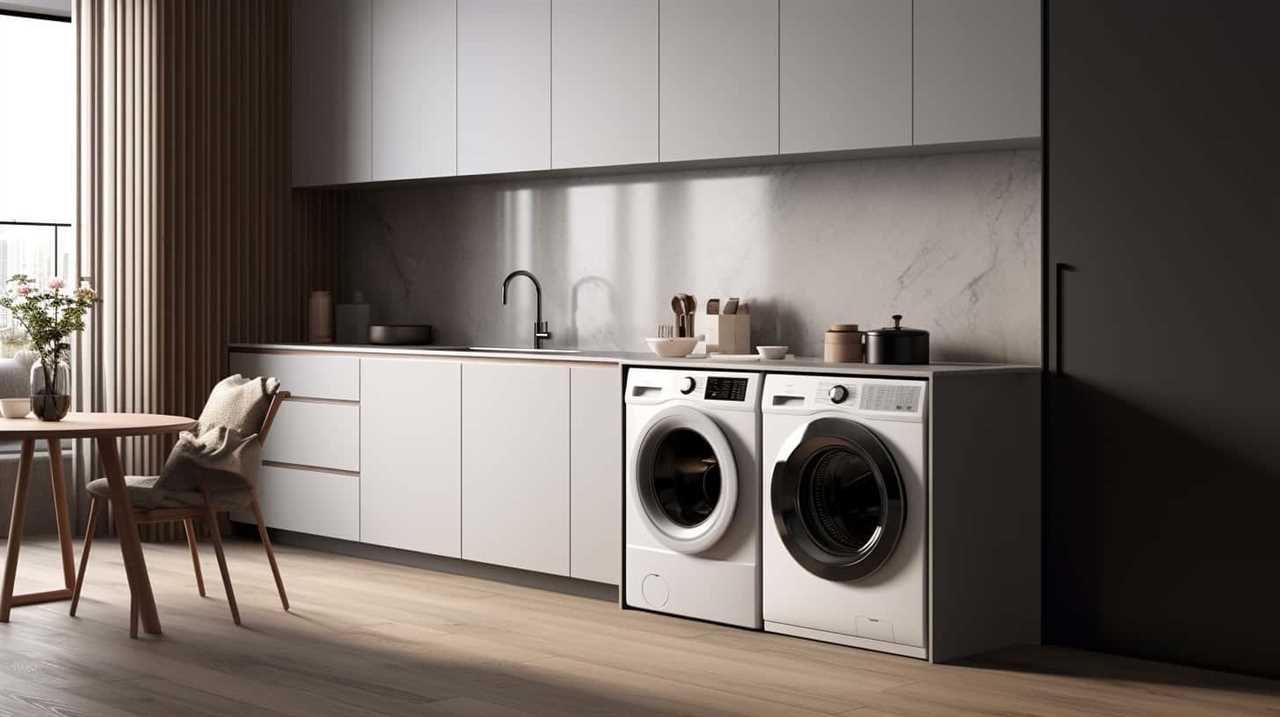
| Risk | Consequence |
|---|---|
| Power surges | Damage to sensitive electronic components |
| Electrical faults | Fire hazards and irreversible damage |
| Lightning strikes | Equipment failure and electrical damage |
The Convenience Factor: Balancing Energy Savings and Convenience
Achieving a balance between energy savings and convenience can be a challenging task when considering the convenience factor of unplugging appliances. While unplugging appliances when not in use can save energy, it can also be inconvenient for users who have to constantly plug and unplug their devices.
However, finding alternatives to standby power can help in balancing convenience and sustainability. Here are some options to consider:
- Utilizing smart power strips that automatically cut off power to appliances when they are not in use.
- Investing in energy-efficient appliances that consume less power in standby mode.
- Using timers or programmable plugs to control the operating hours of appliances.
How to Develop an Unplugging Routine
Developing an unplugging routine can help individuals save energy and reduce their electricity consumption. By creating habits and establishing a routine, individuals can ensure that appliances and electronic devices are not left on standby unnecessarily.
To develop an effective unplugging routine, it is important to first identify the appliances and devices that consume the most energy when in standby mode. These typically include televisions, game consoles, and desktop computers.
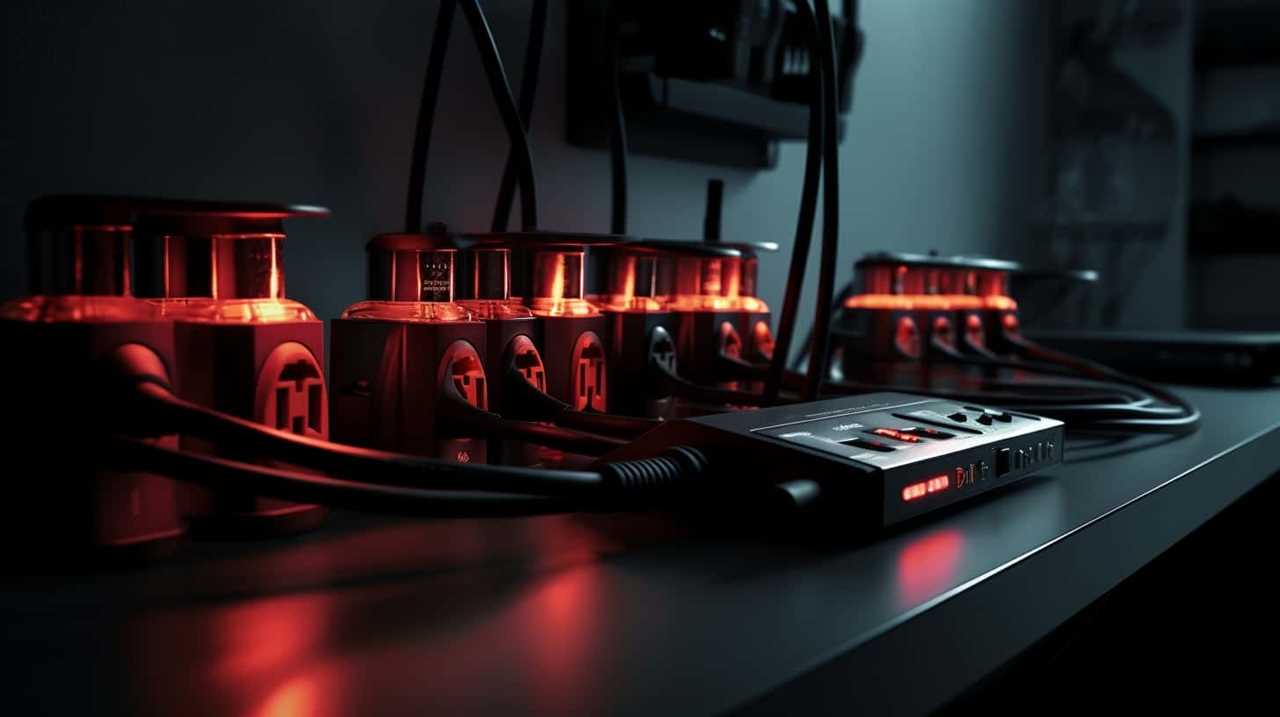
Once identified, individuals can consciously unplug these devices when not in use, or utilize power strips with on/off switches to easily turn off multiple devices at once. Additionally, setting reminders or timers can help individuals stay consistent with their unplugging routine.
Unplugging Appliances: Tips and Tricks for Success
Efficiency is key when it comes to successfully unplugging appliances. To help you reduce vampire power and maximize energy savings, here are some tips and tricks:
- Create a checklist: Make a list of all the appliances that need to be unplugged when not in use. This will help you stay organized and ensure nothing is left plugged in unnecessarily.
- Use power strips: Plug multiple appliances into a power strip and switch it off when not in use. This eliminates the need to unplug each appliance individually.
- Utilize timers: Set timers for appliances that need to be on for a specific duration. This ensures they automatically turn off when not needed, saving energy.
Frequently Asked Questions
Are There Any Appliances That Don’t Use Phantom Power?
Energy efficient appliances, such as LED light bulbs and smart thermostats, have features designed to minimize phantom power consumption. Additionally, appliances that run on alternative power sources, like solar panels or wind turbines, do not rely on the grid and eliminate phantom power usage.
Can Using Power Strips Help Save More Energy Than Simply Unplugging Appliances?
Using power strips can help save more energy than simply unplugging appliances due to their efficiency in reducing phantom power consumption. Power strips provide energy-saving alternatives by allowing users to easily switch off multiple appliances simultaneously, reducing standby power usage.

Does Unplugging Appliances Really Make a Significant Impact on Reducing Energy Consumption?
Unplugging appliances can have a significant impact on reducing energy consumption, leading to both environmental and economic benefits. By eliminating standby power consumption, the environmental impact is minimized while energy costs are reduced.
Are There Any Safety Concerns Associated With Unplugging Appliances?
Unplugging appliances can lead to energy savings, but it is essential to consider safety concerns. Electrical hazards can arise if proper precautions are not taken when unplugging appliances. It is advisable to follow safety guidelines to minimize the risk of accidents.
How Can I Track the Energy Savings From Unplugging Appliances?
Tracking methods and energy monitoring systems can be used to measure the energy savings from unplugging appliances. These tools provide a detailed analysis of the amount of energy saved, allowing users to quantify the environmental and cost benefits of this practice.
Conclusion
In conclusion, unplugging appliances is a simple yet effective way to save energy and reduce environmental impact.

Phantom power, the energy consumed by appliances in standby mode, can account for a significant portion of household electricity usage. By developing an unplugging routine and balancing energy savings with convenience, individuals can protect their appliances and contribute to a greener future.
An interesting statistic to note is that standby power can account for up to 10% of residential electricity consumption, highlighting the importance of unplugging to conserve energy.

